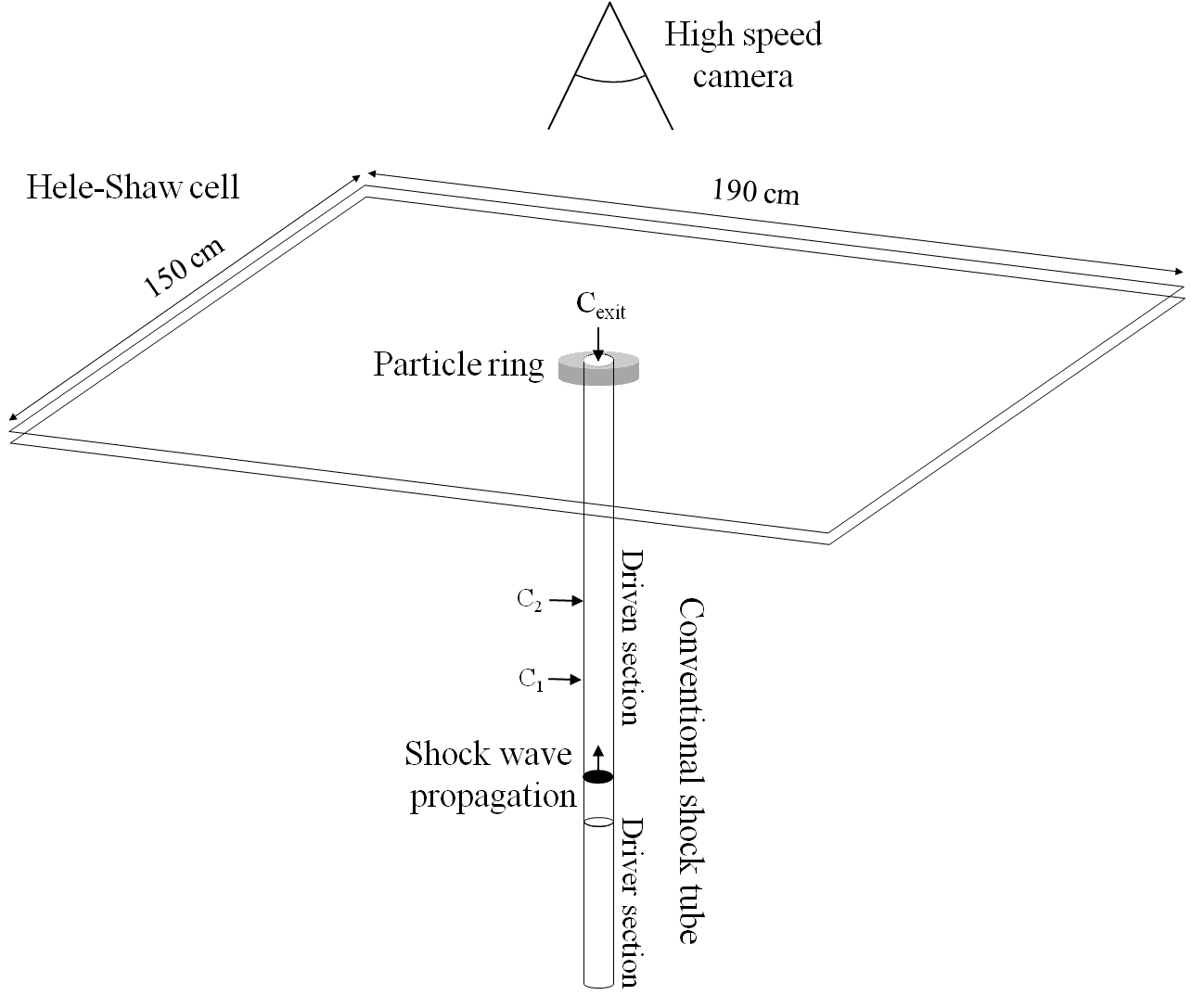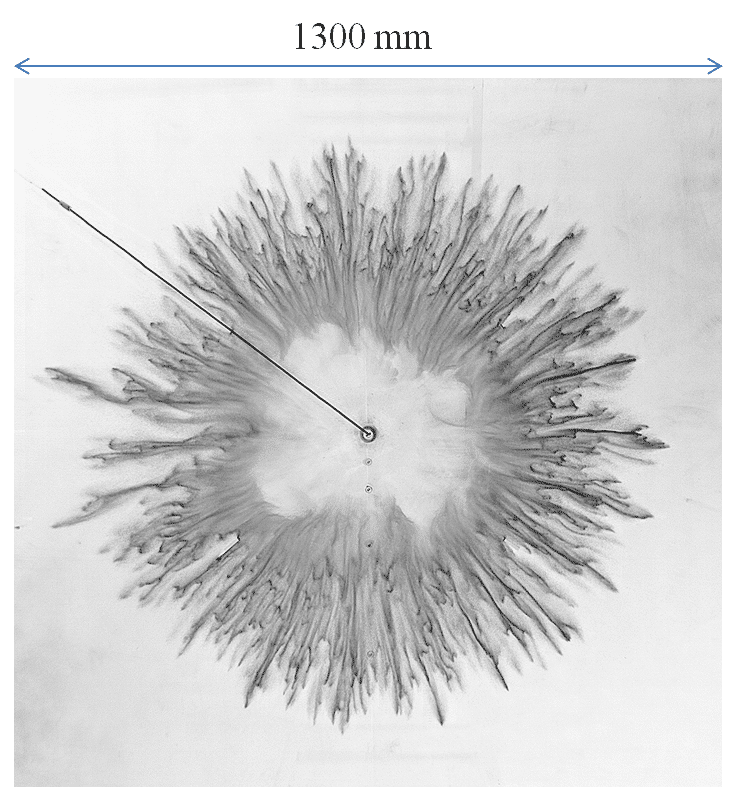Experimental studies have shown that when solid particles are submitted to a shock or blast wave, they are dispersed, often developing a spacial distribution. This physical behaviour takes the form of coherent jets which persist for some distance during the dispersion whose the distribution depends both on the material properties of the particles and the strength of the shock wave. All the experiments conducted so far have been performed in three-dimensional geometry [1-6]. The aim of our experimental investigation is to study the phenomenon in a two-dimensional geometry in order to accurately extract information from the physical behaviour [7]. The advantage of this experiment is that it requires only compressed air. Generated energy rates are consequently low and experiments can be conducted in laboratory with weak shock waves. For this, a granular medium is confined inside a Hele-Shaw cell as shown in Fig. 1.

Fig 1: Sketch of the experimental set-up composed of a 4 mm width Hele-Shaw cell and a conventional shock tube vertically fitted beneath the cell.
A blast wave, issued from the discharge of a planar shock wave at the exit of a conventional shock tube, is generated in the center of a solid particle ring. The conventional shock tube is fitted beneath the cell. When the blast wave leads to the Hele-Shaw cell, the particles are accelerated radially, as shown in Fig. 2, developing the formation particle jets. 
Fig 2: Example of picture showing the jet formation of flour particles set to motion by a shock wave.
From ultra-rapid visualizations and pressure measurements at different stations of the experimental setup, we try to identify the different mechanisms likely contribute to the jet formation. Parameters such as material properties (particle density and diameter), strength of the incident shock wave and the initial geometry of particle rings can be changed in order to find out what parameters can control the breaking mode of the particle clusters. During the symposium, we hope to present original results issued from this experimental investigation.
References
[1] Frost DL, Goroshin S, Zhang F (2010) Jet formation during explosive particle dispersal. MABS 21, Jerusalem, Israel.
[2] Zhang F, Frost DL, Thibault PA, Murray SB (2001) Explosive dispersal of solid particles. Shock Waves 10:431–443.
[3] Frost DL, Ornthanalai C, Zarei Z, Tanguay V, Zhang F (2007) Particle momentum effects from the detonation of heterogeneous explosives. Journal of applied physics 101,113529.
[4] Milne AM, Parrish C, Worland I (2010) Dynamic fragmentation of blast mitigants. Shock Waves 20:41–51.
[5] Parrish C, Worland I (2011) Dynamic jet formation from mitigation materials. ISSW 28, Manchester, UK.
[6] Frost DL, Grégoire Y, Oren P, Goroshin S, Zhang F (2012) Particle jet formation during explosive dispersal of solid particles. Physics of Fluids 24, 091109.
[7] Rodriguez V, Saurel R, Jourdan R, Houas L (2013) Solid-particle jet formation under shock-wave acceleration. Phys. Rev. E 88, 063011.

